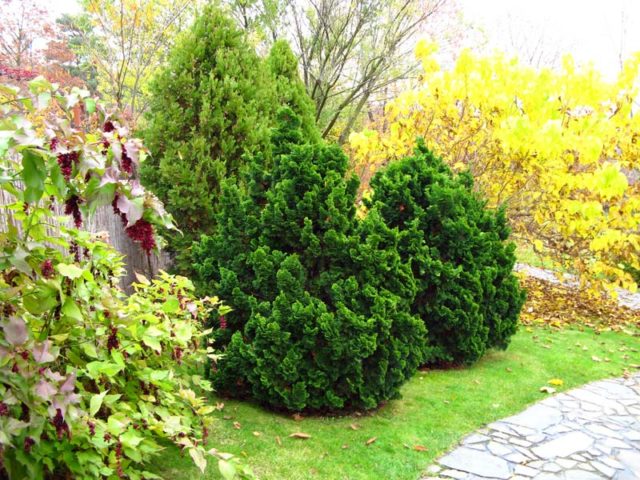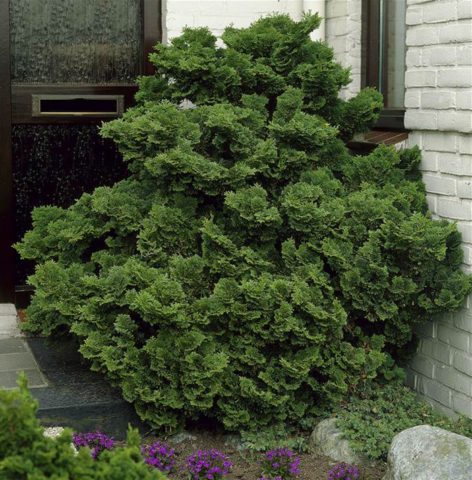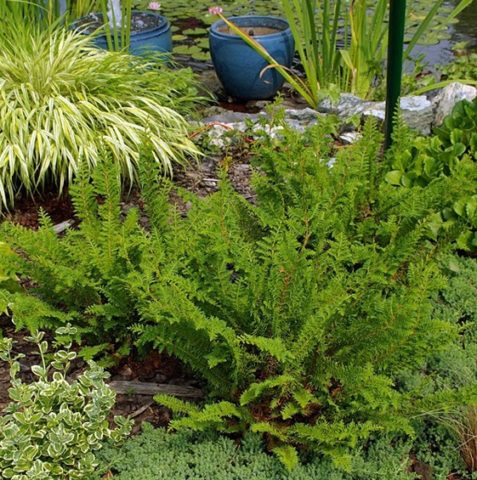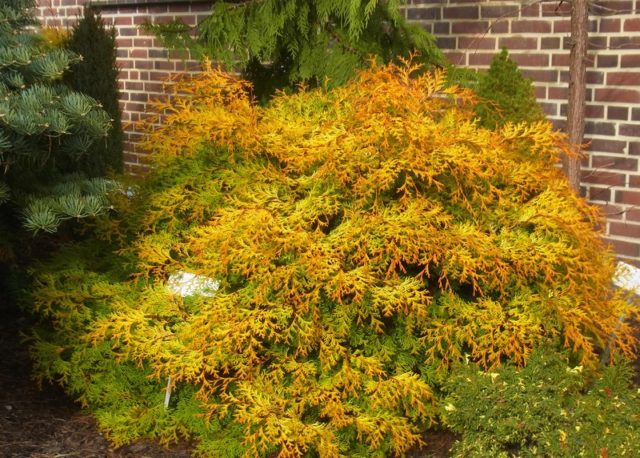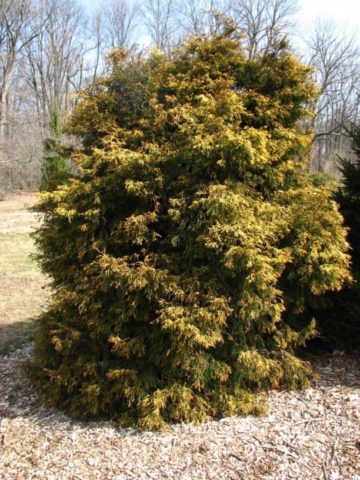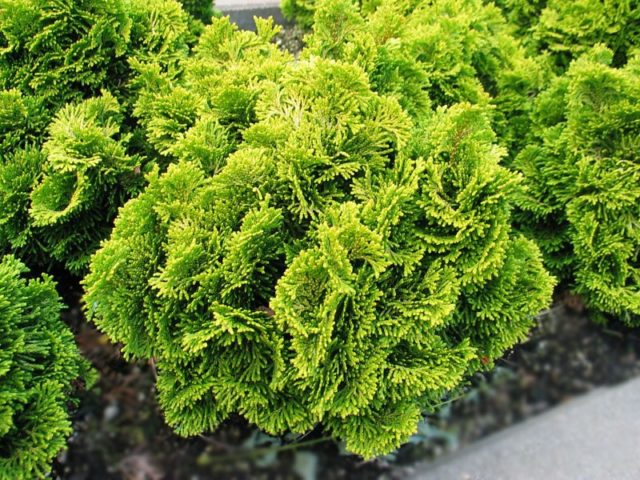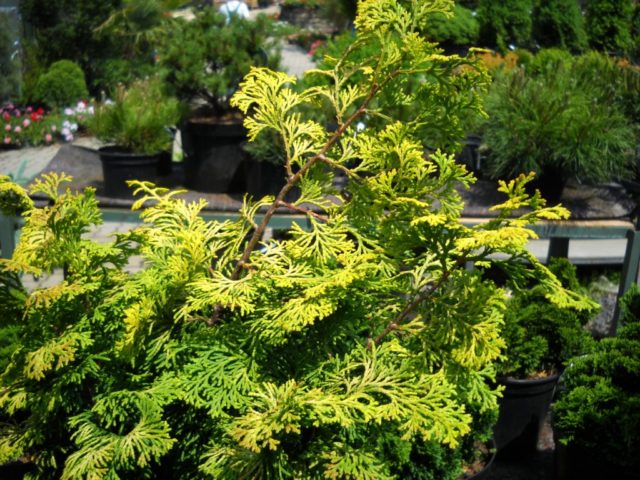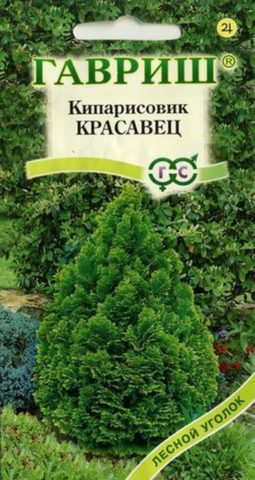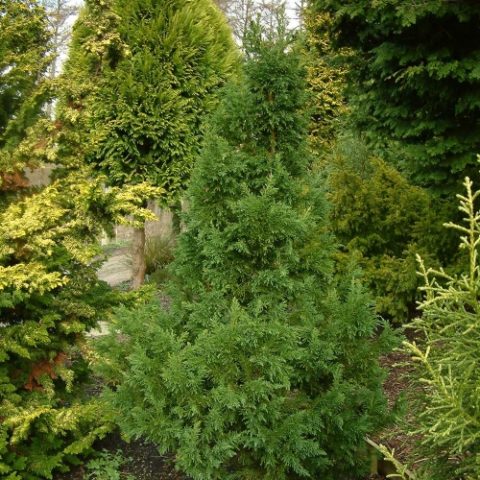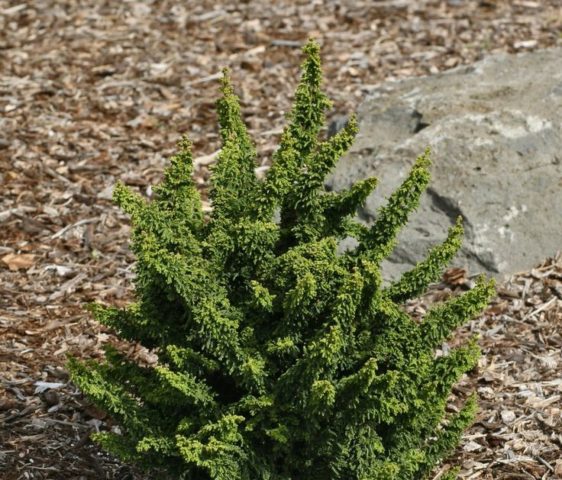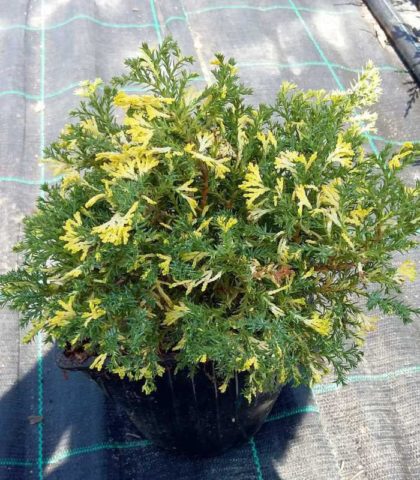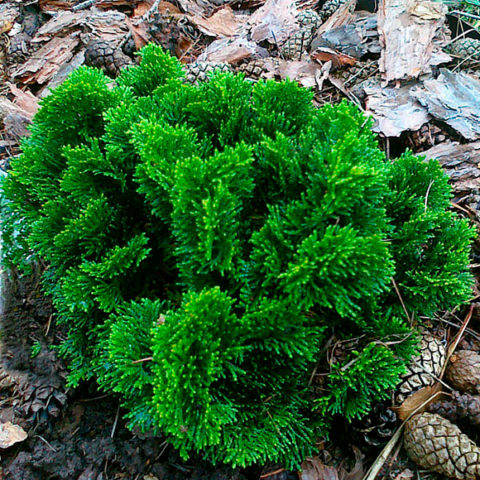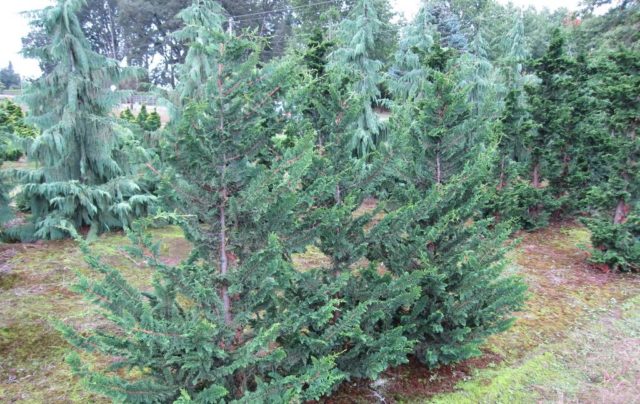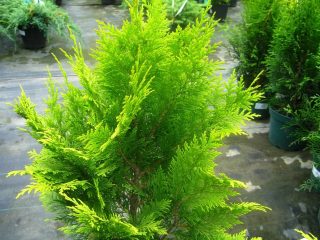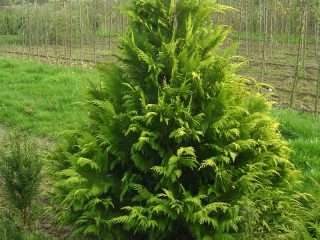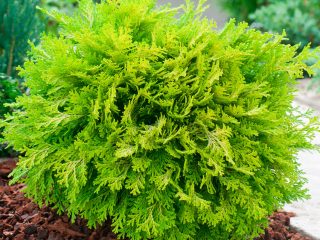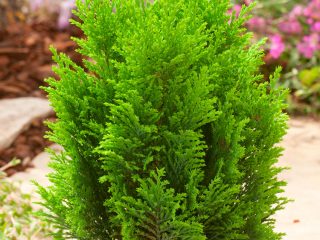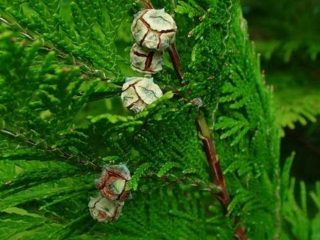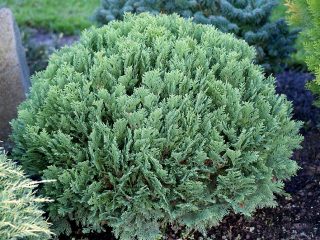Content
- 1 Description of obtuse cypress
- 2 Winter hardiness of obtuse cypress
- 3 Varieties of obtuse cypress
- 3.1 Dumb cypress Nana Gratsilis
- 3.2 Cypress stupid Teddy Bia
- 3.3 Cypress obtuse Camarachiba
- 3.4 Cypress stupid Tatsumi Gold
- 3.5 Dumb cypress Aurora
- 3.6 Rashahib's stupid cypress
- 3.7 Dumb Cypress Handsome
- 3.8 Cypress obtuse Drakht
- 3.9 Dumb cypress Chirimen
- 3.10 Cypress blunt leaf Saffron spray
- 3.11 Cypress obtuse Pygmy Aurescence
- 4 Planting and caring for blunt-leaved cypress
- 5 Reproduction
- 6 Diseases and pests
- 7 Reviews of Cypress obtuse
- 8 Conclusion
Cypress blunt-leaved Nana Gracilis and other decorative varieties, recently bred by breeders, will enhance any garden plot. Caring for this family of plants is easy. The blunt-leaved species is winter-hardy, grows for a long time in temperate climates with high humidity without severe frosts.
Description of obtuse cypress
The species naturally grows in mountainous and humid areas of western North America and Japan. Moisture-loving, in central Russia it develops well in an area protected from sharp gusts of cold wind. In the arboretums of St. Petersburg, where specimens of the blunt-leaved species have taken root since the second half of the 19th century, it requires shelter for the winter, especially at a young age. A prerequisite for successful development is soil acidity in the pH range of 4.5-6.
The trees are powerful, reach 10-40 m, the trunk is 0.5-1.5 m wide, and live over 100 years. The resulting cultivars below fit well into the landscape of modern gardens. Like the blunt cypress Nana Gracilis, which is now at the height of fashion, the dense crown is created naturally in the shape of a cone. The branches spread laterally and produce many lateral shoots. The tops of the branches droop slightly. The shoots are thick and short. The smooth bark is light, brown, with a reddish tint.
The leaves of the blunt-leaved cypress are scaly, pressed to the shoots. The ends are blunt. The upper plane is shiny, green, and the lower surface has whitish stomatal stripes. Breeders worked to produce cultivars with different leaf colors. And as a result, the gardens enchant with bushes with soft needles of dark green, like the blunt cypress Nana Gracilis, turquoise, green-yellow shades. The length of flat leaves is from 1.5 to 1.8 mm, width – 1 mm.
Globular cones of a blunt-leaved appearance from 8 mm to 1 cm, orange-brown, located on short branches. Composed of 8-10 wrinkled scales, which contain 2-3 narrow-winged grains.
Winter hardiness of obtuse cypress
Our gardens include varieties that easily take root and grow in temperate climates. The winter hardiness of the blunt cypress Nana Gracilis and other varieties is satisfactory. Plants can withstand frost of 20-23 °C without shelter. The seedlings are covered for the winter. When snow falls, a snowdrift is created near the tree, which is removed with the onset of spring. The obtuse cypress bush Filicoides is more frost-resistant, which can withstand low temperatures down to -34 °C.
Varieties of obtuse cypress
Culture looks harmonious in any environment.Creating a contrast to flowering plants in the warm season, in winter the blunt-leaved cypress enlivens the monochromatic landscape. The forms of plants suitable for our gardens are varied: slender pyramidal trees, shrubs with original leaf colors, dwarf trees.
Dumb cypress Nana Gratsilis
Included in the dwarf category. According to the description, the blunt cypress Nana Gracilis grows to a maximum of 3 m, by 10 years - 50 cm. Over the course of a season, the tree grows by 5 cm, and the crown expands by 3 cm. Horizontal, densely located branches form a round, squat crown of the seedling, similar from above on curls of shells. With age, it acquires the silhouette of a wide oval.
The blunt-leaved cypress variety Nana Gracilis, according to gardeners, creates the impression of a very fluffy bush, since the branches are closely adjacent to each other.
The shiny leaves are dark green in summer and winter. The root system is powerful and located close to the surface. Cypress Nana Gracilis is undemanding in planting and care. The main condition is to plant in a fertile and loose substrate, to provide moisture not only to the soil, but also to the air. In most gardens, blunt cypress is placed in shady or semi-shaded areas. After the snow cover is established, the plant is carefully covered with snow, the bush is well preserved until spring.
Cypress stupid Teddy Bia
The bush is colorful, with original branches similar to fern leaves. According to reviews, the blunt cypress Teddy Bear always plays the role of a soloist in a shaded flower bed, thanks to its rich emerald green needles, which are collected in flat, elongated fans.The dwarf blunt-leaved cypress grows to only 90-100 cm and forms a crown of the same diameter. The color of young needles is bright green. The red-brown bark is smooth.
With moderate watering in rich, well-drained soils, Cypress Cypress grows in full sun or partial shade. Suitable for planting in rockeries and alpine hills. Teddy Bia is also bred for landscaping terraces, balconies or roofs. With the correct selection of substrate for the container, sufficient watering and fertilizing, it develops well as a potted crop.
Cypress obtuse Camarachiba
The variety is very decorative and combines with many plants due to the golden, warm color of the needles. The description of the obtuse cypress Kamarachib indicates its semi-prostrate crown of irregular shape during the first years of development. With age, the shrub acquires the harmonious shape of an oval or hemisphere, remaining in the dwarf category.
Branches with yellow-green needles that are soft to the touch and warm brown tips hang picturesquely. After 10 years, the height of the Camarachiba blunt-leaved cypress is 0.6 m, the diameter of the spreading crown is 0.8-0.9 m. It rises to a maximum of 1 m with a width of 1-1.2 m.
The Camarachiba obtuse cypress, according to the description, has a winter hardiness zone of 6, the plant tolerates frosts down to -20 °C without shelter. Choose a cozy place where the north wind does not blow. Place the nutrient substrate in a well-drained hole. The dwarf Camarachiba cypress is an ideal plant for pot planting.
Cypress stupid Tatsumi Gold
Although the Tsatsumi obtuse cypress bush grows to only 50 cm by the age of 10, almost the same in height and width, adult specimens reach 1.5-2 m. Over the course of a year, growth ranges from 5 to 10 cm.Strong, decoratively curved shoots of the variety form an openwork, flat-spherical crown. The elegance of the Tsatsumi Gold obtuse cypress is emphasized by the soft needles of a delicate, golden-green color. The variety can also be placed in the sun; the needles do not fade. The range of suitable soils is wide: from slightly alkaline to acidic.
Dumb cypress Aurora
A variety of the dwarf category, a very attractive bush with a wide-conical, uneven crown shape. The shoots grow by 5 cm per year. In an adult tree, the crown takes the shape of an irregular cone. Wavy branches create a picturesque pattern on the crown, twisting in different directions. The color of the bright, shiny needles is emerald-golden. The Aurora bush will add a touch of sophistication and elegance to the garden. Planted in light partial shade, does not suffer in the sun. Timely watering is important.
Rashahib's stupid cypress
The medium-sized variety, which reaches 2 m by the age of 10, has a wide-pyramidal crown. The decorative value of the obtuse cypress Rashakhib, as described by gardeners, lies in the excellent mixing of colors of green and yellow shades on the shoots of one plant.
In the center of the bush the colors are emerald green, which give way to lighter, almost yellow tints towards the tops of the shoots. The lemon coloring of young shoots over time acquires a shade of fresh greenery. Rashahiba cypress bushes are placed in the sun or in a place with light shade.In rock gardens, it is necessary to mulch the soil well in order to retain its moisture longer after watering.
Dumb Cypress Handsome
The well-known company for the production and sale of seeds “Gavrish” offers seeds of the blunt-leaved cypress called Krasavets. The annotation contains data on the natural appearance of the plant. The tree grows slowly; it is planted on sour, moist loams, preferably in a sunny place. When growing, they maintain a loose soil structure.
Cypress obtuse Drakht
The bush is taller than popular low-growing cultivars, rises to 2.5-3 m, the diameter of the irregular cone-shaped crown extends to 50-150 cm. The structure of the soft needles is original, twisted around the branches. The color of the Draht cypress is green, with a grayish coating. In winter with a bronze tint.
Dumb cypress Chirimen
The tree received its name due to the effect of its irregular cone-shaped crown. It is formed by shoots curved in different directions, growing upward. This is what wrinkled kimono fabric was called in Japan. The blunt cypress variety Chirimen belongs to the slow-growing dwarf variety, rising to 1.2-1.5 m, with a crown diameter of 0.4-0.6 cm. After 10 years, the seedling reaches 45 cm in height. The leaves are bright green, with pointed tips. The bark of the shoots is gray-brown.
Cypress blunt leaf Saffron spray
The openwork conical crown of a general dark green hue is decorated with yellow tips of individual shoots. The variegated color lasts a whole year. The blunt cypress Saffron Spray grows slowly: by the age of 20 it reaches 150 cm.
Cypress obtuse Pygmy Aurescence
This cultivar is decorative thanks to the light green needles on the wide leaves-vanes. The crown of an adult obtuse cypress Pygmaea Aurescens is neat, round in shape, 2-3 m in diameter, low in relation to the trunk, which grows to 1.5-2 m. Pygmaea Aurescens tolerates urban smoke conditions well.
Planting and caring for blunt-leaved cypress
The species grows for a long time in the climate of the central zone of the country, if you adhere to the following conditions:
- the place does not suffer from northern winds;
- the soil is drained and regularly moistened;
- soils are neutral or slightly acidic;
- variegated bushes are planted in sun and partial shade.
It is advisable to purchase expensive blunt-leaved seedlings only in nurseries. The hole is dug in the fall, and planting is carried out in the spring. The hole should be 60x60x80 cm in size. Broken bricks and sand are placed at the bottom in a layer of 20 cm for drainage. The seedling is placed so that the root collar is not covered with soil. No fertilizers are added, especially organic ones. Water with 8-9 liters of water, mulch with peat and sawdust. Shade from the sun is provided for 2-3 weeks.
Maintenance includes loosening the soil after watering, which is carried out weekly. Be sure to provide sprinkling for blunt-leaved plants if there has been no rain for a long time. For the seedlings, purchase special fertilizer for conifers. For winter, prepare a shelter from agrofibre, burlap, or cover it with snow. Next spring, pruning is carried out, removing damaged branches and forming a crown. The blunt-leaved species tolerates haircuts well; specialists create topiary forms.
Reproduction
The species of blunt-leaved cypress trees is propagated by seeds, which are sown in a container and placed in the refrigerator for 3 months for stratification. Then the sprouts are transferred to the shkolka. It is easier to dig in cuttings from the lower branches.The top of the branch is not buried, but tied to a peg. In spring, the sprouts are planted. Cuttings are taken in early summer and planted in a mini-greenhouse. Rooted sprouts are transplanted into the garden in the fall, covered with leaves.
Diseases and pests
The blunt-leaved species is hardy. Trees may suffer from root rot due to overwatering. Sometimes branches damaged by the fungus dry out. Spray with fungicides. Having noticed rotting of the roots, the seedling is dug up, the sore spots are cut off, treated with ash and fungicide and placed in a new hole.
Protect against spider mites with acaricides. Insecticides are used against insects, in particular scale insects.
Reviews of Cypress obtuse
Conclusion
Cypress blunt-leaved Nana Gracilis does not require complex care, like other varieties.Plants give the garden a special oriental charm. The evergreen, blunt-leaved shrub especially enlivens the site in the cold season.
